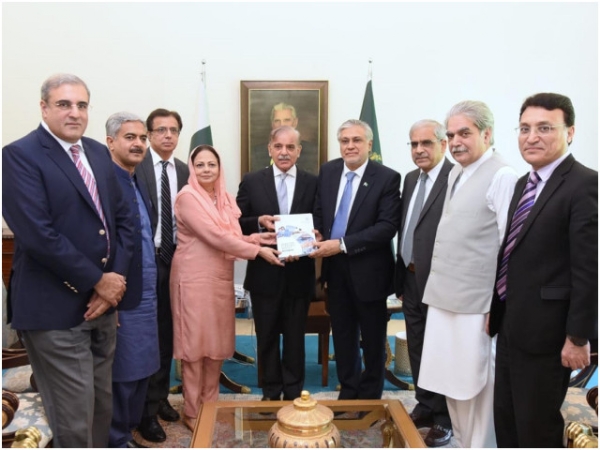Pakistan's GDP grows by 0.29% in 2022-23
09 Jun 2023 13:49:53
Islamabad, Jun 09: Pakistan finance minister Ishaq Dar presented key data about his country's economy on Thursday and the numbers underline the challenge facing prime minister Shehbaz Sharif's government. According to the Pakistan Economic Survey 2022/23, the country's real GDP grew by just 0.29%; the agriculture sector grew by 1.55% while industries declined by 2.94%. The services sector - which contributes nearly 60% to the Pak GDP - grew by only 0.86%.

However, as he presented the numbers Dar spoke less about the dismal performance of various sectors of the Pakistani economy and more about the global environment and economic fundamentals PM Sharif inherited when he replaced ex-PM Imran Khan in April last year.
FIscsl Year 2023 ends at a struggle to avoid sovereign Default but jams the Economic wheelhttps://t.co/oS8w77yXUX
— Shahbaz Rana (@81ShahbazRana) June 9, 2023
Pakistan’s economy slipped into stagflation -- having 0.3% economic growth with the 38% inflation rate -- during the outgoing fiscal year and there are no signs of…
Dar complained of a '[political] project (that was) conceived in 2010, flourished in 2018, and reached its culmination in 2022', but, in the process 'put the country in reverse gear'. He also said the Pak economy - which some believed primed for G-20 membership in a few years - had lost its standing due to Imran Khan's Pakistan Tehree-e-Insaaf. “We now have to resume development from where it was left off in 2017... with an inclusive and resilient growth trajectory that is sustainable, builds investor confidence, and ends market nervousness.” Real GDP growth was just 0.29 percent compared to the International Monetary Fund's April prediction of 0.5 percent. However, GDP at current market prices was ₹84,657.9 billion in FY23 - a growth of 27.1 percent from last year. The fiscal deficit fell to 4.6 percent of GDP during July-April FY23 compared to 4.9 percent last year. Headline inflation averaged 29.2 percent between July-May FY23 against 11.3 percent in the same period last year. The agriculture sector grew at an estimated 1.55 percent in FY23, with wheat, sugarcane, maize, and livestock the primary drivers. Cotton and rice production declined by 41 percent and 21. 5 percent, with last year's flash floods having a large negative impact. The industrial sector posted a negative growth of 2.94 percent; a major reason is believed to be a poor performance by manufacturing, which has a 65 percent share in this sector. Large-scale manufacturing declined by 8.11 percent compared to growth of 10.6 percent last year. Mining and quarrying fell by 4.4 percent against a drop of 7 percent last year. Coal production increased by 17.6 percent but natural gas and crude oil output fell by 9.3 percent and 10.2 percent. The Pak government believes 'once global shocks of the war in Ukraine' ends 'the road to global growth and trade prospects (will) be smoother'. The services sector - which contributes nearly 60 percent of Pakistan's GDP - grew by an almost negligible 0.86 percent. Per capita, income declined from USD 1,765 last year to USD 1,568 on account of currency depreciation, lower GDP growth, and increasing population.
Also Read: RBI keeps the repo rate unchanged at 6.5%
Total revenues grew 18.1 percent to ₹6,938.2 billion, or 8.2 percent of GDP, in July-March FY23. Tax revenues grew by 16.5 percent and non-tax revenues by 25.5 percent. Total expenditures grew by 18.7% to ₹10 trillion in July-Mar FY23 Total public debt stood at ₹59.25 trillion by end-March 2023.